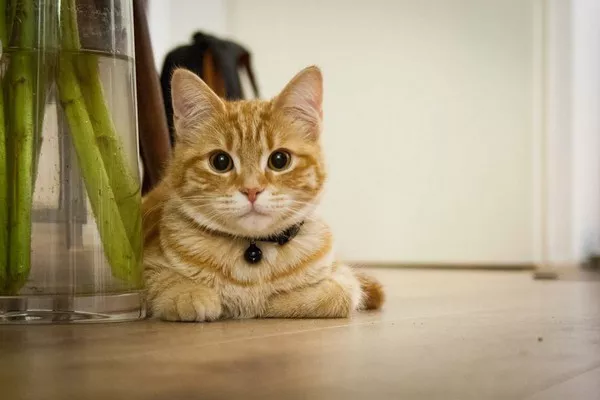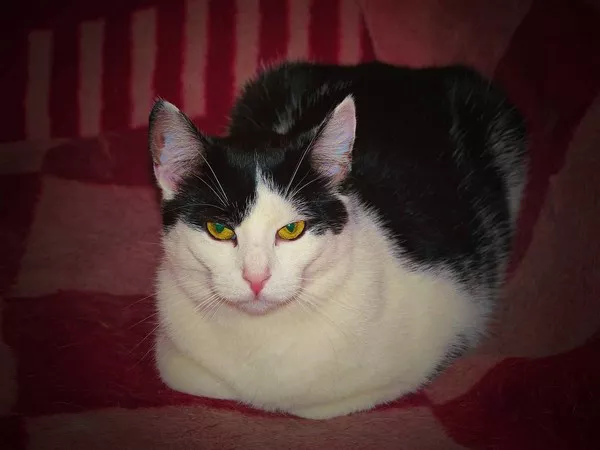Calico cats are renowned for their vibrant and distinctive coat patterns, captivating the hearts of cat enthusiasts worldwide. While many cat owners adore their furry companions regardless of their pedigree, some may wonder about the ancestry of their beloved Calico. Determining whether your Calico cat is purebred involves a careful examination of various factors, including coat patterns, genetics, and breed characteristics. In this comprehensive guide, we will explore the key indicators that can help you ascertain the purity of your Calico cat.
Understanding Calico Cats: A Kaleidoscope of Colors
Calico cats are characterized by their unique coat patterns, which typically consist of three distinct colors – white, black, and orange. These colors are distributed in irregular patches across the cat’s fur, creating a visually striking appearance. The intricate combination of colors in Calico cats is the result of specific genetic factors.
Genetic Basis of Calico Coat Patterns
Calico coat patterns are predominantly linked to the presence of the X chromosome. In cats, the gene responsible for coat color is located on the X chromosome. Female cats have two X chromosomes (XX), while males have one X and one Y chromosome (XY). The gene for coat color can exist in different forms, or alleles.
The key players in determining a Calico cat’s coat colors are the alleles for black (B) and orange (O) colors. The interaction between these alleles, along with the white (W) allele, results in the unique tricolor pattern seen in Calico cats. Importantly, the genes responsible for coat color are inherited from the cat’s parents.
Understanding the Role of Genetics in Purebred Cats
Purebred cats are those that belong to a recognized breed with documented pedigrees. Breeders carefully select mating pairs to preserve specific traits, including coat patterns, body structure, and temperament. In the context of Calico cats, determining purity involves tracing the lineage and ensuring that the cat’s ancestry adheres to the standards set by breed organizations.
Pedigree documentation, which includes information about the cat’s parents and ancestors, is crucial in establishing the purity of a Calico cat. Responsible breeders maintain meticulous records to track the lineage of each cat, helping to confirm its pedigree status.
Physical Characteristics of Purebred Calico Cats
In addition to the intricate genetics behind Calico coat patterns, purebred Calico cats often exhibit specific physical characteristics associated with their breed. While individual variation is expected, certain traits can serve as indicators of a cat’s purebred status.
Distinctive Breed Features
Different cat breeds have their own set of defining characteristics, ranging from body shape and size to facial features and ear shape. For instance, the Japanese Bobtail is a breed known for its distinctively short, kinked tail and triangular face. Persian cats, on the other hand, are recognized for their round faces and long, luxurious fur.
When identifying whether your Calico cat is purebred, consider researching the specific traits associated with the breed. If your cat exhibits these distinctive features, it may provide additional evidence of its purebred status.
Pedigree Documentation and Certification
One of the most reliable ways to confirm the purity of your Calico cat is through pedigree documentation and certification. Reputable breeders provide paperwork that outlines the cat’s lineage, including details about its parents and, in some cases, grandparents. This documentation serves as a crucial piece of evidence supporting the cat’s purebred status.
Additionally, cat breed organizations, such as The International Cat Association (TICA) and the Cat Fanciers’ Association (CFA), play a pivotal role in establishing and maintaining breed standards. Cats that meet these standards and can trace their lineage to registered purebred parents may be eligible for certification.
Behavioral Traits and Temperament in Purebred Calico Cats
While physical characteristics and genetics are integral components of determining a Calico cat’s purity, behavioral traits and temperament also play a significant role. Different cat breeds are associated with specific personality traits, and purebred Calico cats may exhibit behaviors consistent with their breed.
Researching Breed-Specific Temperaments
Each cat breed is known for certain behavioral traits and temperaments. For example, Siamese cats are renowned for their vocal nature and affectionate demeanor, while Maine Coons are often described as gentle giants with a friendly disposition.
When assessing the purity of your Calico cat, observe its behavior and compare it to the documented temperament of its potential breed. Keep in mind that individual variation exists, and some cats may display a mix of traits from different breeds.
Consulting Breed Experts and Veterinarians
Seeking the opinion of breed experts or veterinarians with experience in cat genetics and behavior can be valuable. These professionals can provide insights based on their expertise and may identify subtle cues or traits indicative of a specific breed.
See Also:Do Calico Cats Shed a Lot?
Additionally, veterinarians can assist in evaluating the overall health and well-being of your Calico cat, contributing to a more comprehensive understanding of its background.
Challenges and Considerations in Determining Calico Cat Purity
While the indicators mentioned above can provide valuable insights, it’s essential to acknowledge the challenges and considerations involved in determining the purity of Calico cats.
Genetic Variation and Hybridization
Calico coat patterns are not exclusive to a single breed, and genetic variation can result in similar coat patterns in cats of different breeds or even non-purebred cats. Hybridization, where cats of different breeds mate, can further complicate the identification process.
In such cases, identifying the specific breed or combination of breeds contributing to a Calico cat’s appearance may be challenging without detailed pedigree information.
Incomplete Pedigree Information
Not all Calico cats come with complete pedigree information. Cats adopted from shelters or rescue organizations, for example, may lack documented lineage, making it difficult to trace their ancestry.
In these situations, determining purity becomes more challenging, and the focus may shift towards appreciating the unique qualities of the individual cat rather than strictly adhering to breed standards.
Conclusion: Embracing the Uniqueness of Your Calico Companion
In the quest to determine if your Calico cat is purebred, it’s crucial to approach the process with a blend of curiosity and appreciation for the individuality of each feline friend. While genetic factors, physical characteristics, and behavioral traits offer valuable clues, the joy of cat ownership transcends the boundaries of pedigree.
Whether your Calico cat proudly carries the lineage of a specific breed or boasts a blend of various feline ancestors, the unconditional love and companionship they provide are truly priceless. Embrace the uniqueness of your Calico companion, revel in their vibrant coat patterns, and cherish the special bond that makes every cat a one-of-a-kind treasure in the world of feline friends.
Related Topics:
How Much Does a Calico Cat Cost in the Philippines?
How Much Does a Calico Cat Cost in India?
What is the Rarest Calico Cat Color?
























